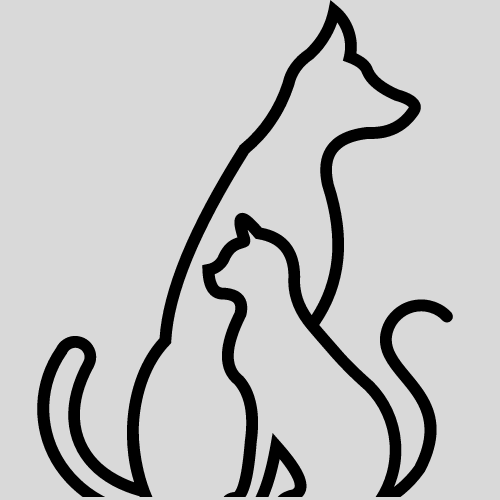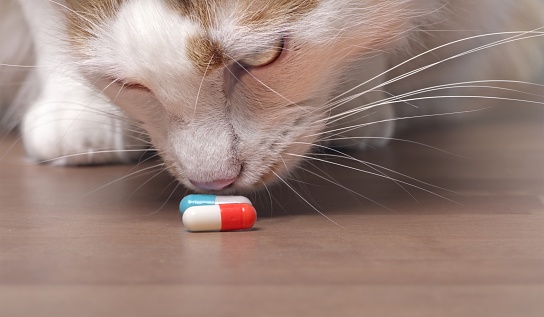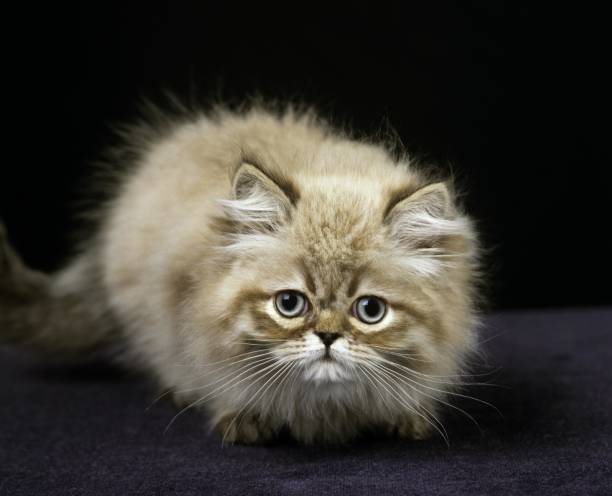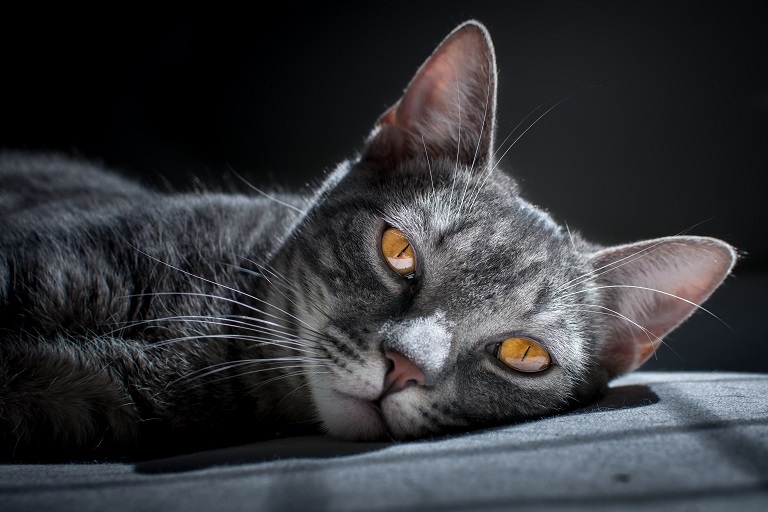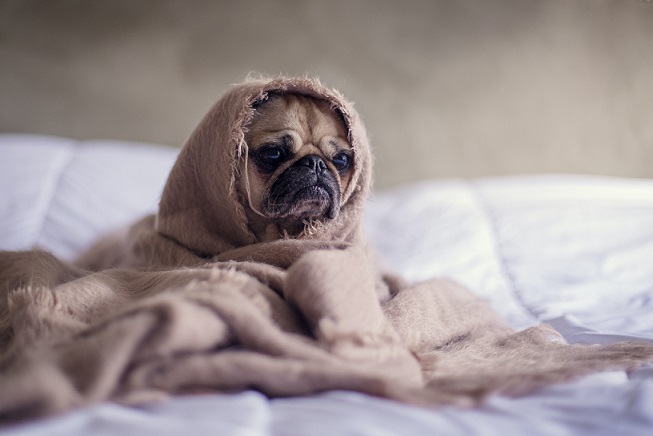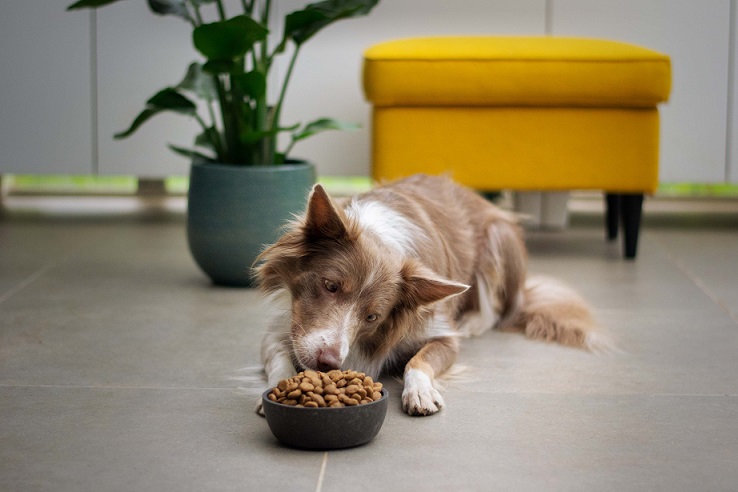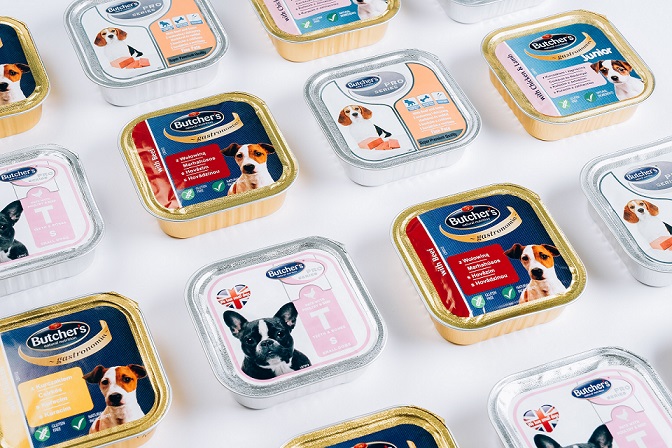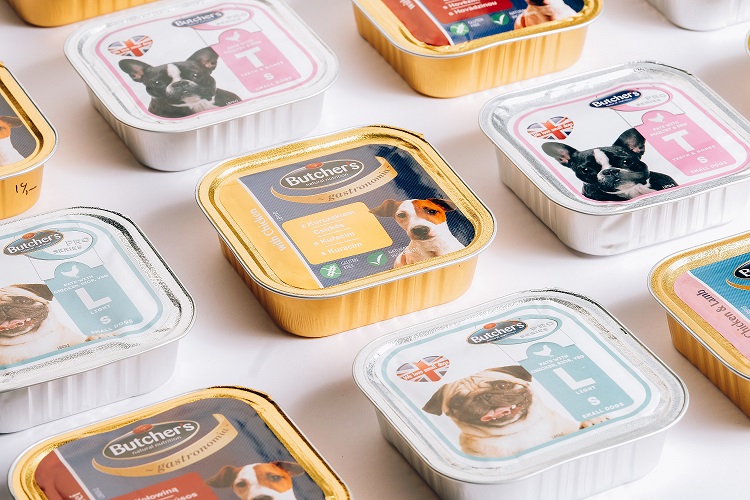A healthy diet is very important for cats. Not only does it provide them with the nutrients they need, but it can also help to prevent health problems such as obesity, diabetes, and heart disease. In this article, we will discuss what you should be feeding your cat and why.
There are a few things you should keep in mind when feeding your cat:
- Make sure to give them a balanced diet that includes both meat and plant-based proteins.
- Be sure to feed them small meals throughout the day instead of one large meal.
- Make sure to give them fresh water and fresh food every day.
What’s in the Best Cat Food?
The best cat food will have the following ingredients:
- A good source of protein, such as meat or fish.
- Good sources of carbohydrates, such as grains or potatoes.
- Good sources of fats, such as oils or nuts.
- Fruits and vegetables to help provide your cat with vitamins and minerals.
We also advice that you consider these too:
- That the food contains the right nutrients for your kitty at their stage in life.
- Choose a food that you are sure your cat will enjoy eating.
- That the food is affordable and easy to store.
Essential cat food ingredients
When looking for a food that is good for your cat, it is important to consider the ingredients. Some of the best ingredients for cat food include:
- Meat is a great source of protein and contains all the essential amino acids needed by cats. It also provides energy and helps keep cats healthy.
- Grains are a good source of carbohydrates and provide your cat with energy. They are also high in fiber which helps to keep your cat’s digestive system running smoothly.
- Oils are great sources of fats and help to keep cats healthy and energetic. They also contain omega-3 fatty acids which are important for keeping your kitty’s skin and coat healthy.
- Nuts are a great source of fats and proteins. They also contain fiber which helps to keep your cat’s digestive system running smoothly.
- Phosphorous is an essential nutrient for cats. This mineral is obtained from the meat that cats ingest to build healthy teeth and bones alongside calcium. Phosphorous helps keep the intestines functioning properly, and it helps to create strong bones.
- Iron is an essential mineral for mammals, and is found in the cells of the body. Iron is important for the function of red blood cells, which transport oxygen to all parts of the body.
Brief history of Cat food
The history of cat food is a long and varied one but we will kep it brief. The ancient Egyptians were believed to have been the first people to domesticate cats, around 3,000 BC. It was during the Han Dynasty that cats began to be bred for their fur, and so their food requirements changed as well.
At first, they were fed mostly meat, but over time they began to be given more vegetables and grains. There are a number of different types of cat food on the market, and each has its own advantages and disadvantages. Some of the most popular types include wet food, dry food, canned food, and even kibble.
It’s important to choose the right type of cat food for your cat’s specific needs. For example, some cats prefer wet foods while others prefer dry foods. You’ll need to experiment a little to find out what works best for your cat.
How to read a cat food label?
When it comes to feeding your cat, you want to make sure that you are providing them with the best diet possible. One way to do this is by reading their food label. Here are some tips on how to do just that:
1. Look for the nutritional information panel first. This will give you an overview of the ingredients and how much they contain in terms of calories, protein, fat, and carbohydrate.
2. Second, look for the ingredient list. This will tell you which products are being used in the food and what they are made of. Try to avoid foods with artificial colors or flavors, since these can be harmful to cats’ health.
3. Finally, read the directions carefully before preparing your cat’s food. This will ensure that you are providing them with the correct amount and type of food.
What to lookout for in cat food labels?
When it comes to feeding your cat the perfect diet, it is important to be aware of the labels on food products. Some things to look out for include:
- The type of meat or ingredients used in the food. Some foods may contain meat that is high in fat or sodium, which can be harmful to your cat.
- The amount of protein and other nutrients in the food. A balanced diet should have enough protein and other nutrients to help support your cat’s health and well-being.
- The type of carbohydrate in the food. Carbohydrates are important for energy, so make sure that the food contains enough of them to meet your cat’s needs.
How Often Should I Feed My Cat?
A general rule of thumb is to feed your cat two to three times a day. However, depending on your cat’s size and activity level, you may need to feed it more or less often.
How much Should I Feed My Cat?
When it comes to feeding your cat, there is no one-size-fits-all answer. However, according to the ASPCA, a healthy cat should be eating between 2 and 3 cups of food per day. So, if you’re feeding your cat twice a day, make sure to give them around 6-8 cups total. And remember: always consult with your veterinarian before making any changes to your cat’s diet.
If your cat isn’t eating enough food, there are a few things you can do to help;
- First, try increasing the amount of food you’re feeding it.
- Second, try changing the type of food you’re feeding your cat.
- Third, try offering your cat different types of toys and activities to keep it occupied and interested in its food.
Finally, consult with a veterinarian about possible dietary changes that may be necessary. If your cat is losing weight, it may be because it’s not getting enough food. Make sure to increase its food amount and consult with a veterinarian about other possible changes to its diet.
What If My Cat Doesn’t Eat Enough?
If your cat isn’t eating enough food, there are a few things you can do to help.
- Try increasing the amount of food you’re feeding them.
- Try changing the type of food you’re feeding your cat.
- Try offering your cat different types of toys and activities to keep it occupied and interested in its food.
Finally, consult with a veterinarian about possible dietary changes that may be necessary.
What If My Cat Loses Weight?
If your cat is losing weight, it may be because it’s not getting enough food. Make sure to increase its food intake gradually until its weight returns to normal. If there’s no change in the cat’s weight then you might want to consult a veterinarian as soon as possible.
Types of cat food diet
There are many different types of cat food diet, but the most important thing is to make sure that your cat is getting the nutrients it needs. There are a variety of different types of food that can be used to feed cats, including canned or dry food, wet food, treats, etc It’s important to find the type of diet that your cat enjoys and that meets its nutritional needs.
Natural diet for cats
A good starting point for feeding a natural diet to your cat may be to feed them a mix of fresh meat, fresh vegetables and fruits, and wet food supplemented with fresh water.
A natural food diet for cats can provide many benefits, including: providing the right nutrients for a healthy cat, helping to control weight and keeping your cat happy and healthy.
Some benefits of feeding a natural food diet to your cat include:
- Improved health and well-being
- Longer life
- Lessened incidence of disease
- Increased energy and vitality
Dry food diet for cats
Dry food diets are one of the most common types of diets for cats. They are easy to store and provide a consistent, nutritionally complete diet for your cat.
Some benefits of a dry food diet for cats include:
- They are easier to store than wet food diets and can be carried with you on trips.
- Dry food is less messy and easier to clean up, so it’s ideal for households with pets that tend to be messy eaters.
- A dry food diet is less expensive than a wet food diet, making it an affordable option for many cats.
Wet food diet for cats
A wet food diet for cats is one of the most popular choices for feeding a cat. Wet food is high in moisture, which helps to keep a cat’s stomach content and digestion moving. Wet food also contains more protein than dry food, which can help to keep your cat healthy and satisfied.
Some benefits of feeding a wet food diet to your cat include:
- Wet food is more filling than dry food, which can help to control weight in cats.
- Wet food is easy to clean up and provides an enjoyable experience for your cat.
- Wet food can be supplemented with fresh water to make sure your cat is getting the correct amount of hydration.
Raw food diet for cats
A raw food diet for cats is a great way to provide them with the nutrients they need and help them maintain a healthy weight. A raw food diet consists of fresh, unprocessed foods that are high in protein and low in carbohydrates. This type of diet is best suited for cats that are overweight or have health problems such as diabetes, heart disease, and kidney disease.
Some benefits of feeding a raw food diet to your cat include:
- A raw food diet is high in nutrients and can help to improve your cat’s overall health.
- A raw food diet is easy to prepare and can be tailored to meet the specific needs of each cat.
- A raw food diet is less expensive than a wet food diet, making it an affordable option for many cats.
Grain-free diet for cats
A grain-free diet for cats is a great option for those who want to keep their cats healthy and happy. Grain-free diets are high in protein and low in carbohydrates, which can help prevent chronic diseases such as obesity and diabetes. Cats also benefit from a grain-free diet because it provides them with the essential nutrients they need to stay healthy.
Some benefits of feeding a grain-free diet to your cat include:
- A grain-free diet is high in nutrients and can help to improve your cat’s overall health.
- A grain-free diet is easy to prepare and can be tailored to meet the specific needs of each cat.
- A grain-free diet is less expensive than a wet food diet, making it an affordable option for many cats.
Vegetarian and vegan diet for cats
A vegetarian or vegan diet for cats is a great way to provide them with the nutrients they need and help reduce the amount of animal-based products they consume. Cats are obligate carnivores, meaning that their bodies require a diet that contains animal-based proteins in order to function properly. A vegetarian or vegan diet for cats may not be completely appropriate for every cat, but it can provide them with the nutrients they need and help reduce the amount of animal-based products they consume.
Some benefits of feeding a vegetarian or vegan diet to your cat include:
- A vegetarian or vegan diet is high in nutrients and can help to improve your cat’s overall health.
- A vegetarian or vegan diet is easy to prepare and can be tailored to meet the specific needs of each cat.
- A vegetarian or vegan diet is less expensive than a wet food diet, making it an affordable option for many cats.
Homemade cat food diets
There are many homemade cat food diets out there. Some people believe that homemade cat food is the best way to feed their cats, while others feel that store-bought foods are just as good or even better. There are pros and cons to both types of feeding, so it really comes down to what you and your cat prefer. Some people also feel that mixing different homemade diets together can create a more balanced diet for their pet.
Here are a few homemade cat food diets that you might want to consider:
- Frozen raw meat: This diet is high in protein and contains all of the essential vitamins and minerals your cat needs. You can either freeze raw meat yourself or buy it frozen.
- Homemade canned food: This diet is high in moisture and can be made with either wet or dry ingredients. It’s a good option if you’re looking to provide your cat with all of the nutrients it needs without having to worry about added sugar, salt, or preservatives.
- Homemade fresh food: This diet is high in fresh fruits and vegetables, which can provide your cat with plenty of vitamins, minerals, and antioxidants. You’ll need to spend.
High energy diet for cats
A high-energy diet is one that is high in protein and low in carbohydrates. This type of diet is best for cats who have a lot of energy and need to burn a lot of calories.
Some high-energy cat diets include:
- Raw meat: Raw meat is a high-energy food because it contains all of the essential vitamins and minerals your cat needs. You can either freeze raw meat yourself or buy it frozen.
- Canned food: Canned food is a high-energy food because it’s high in moisture and can be made with either wet or dry ingredients. It’s a good option if you’re looking to provide your cat with all of the nutrients it needs without having to worry about added sugar, salt, or preservatives.
- Fresh food: Fresh food is a high-energy food because it’s high in fresh fruits and vegetables, which can provide your cat with plenty of vitamins, minerals.
Weight control diet for cats
There are a few things to consider when trying to control your cat’s weight.
- The first is to ensure that they are getting the right amount of food, both in terms of quantity and quality.
- Secondly, it is important to keep track of their activity levels and adjust their diet accordingly.
- Finally, it is also important to monitor their health closely and make any necessary adjustments as needed.
A weight control diet for cats should include:
- A high-quality protein provides your cat with the essential nutrients it needs to stay healthy and energized. Some good options include lean meat, poultry, fish, and eggs.
- Low-fat proteins help to keep your cat’s weight down by providing them with a balanced source of nutrients. Some good options include chicken breast, lamb, and turkey.
- Fiber is important for cats because it helps to regulate their blood sugar levels and keep them feeling full after eating. Some good sources of fiber include vegetables, fruits, and grains.
- Vitamins and minerals are essential for keeping your cat’s body functioning properly. Some good sources of vitamins and minerals include fresh fruits and vegetables, lean meat, poultry, fish, and eggs.
- Water is essential for all animals, including cats. Make sure to provide them with plenty of clean water to drink.
- Green vegetables are a great source of vitamins and minerals as well as fiber. Some good options include broccoli, cauliflower, kale, Brussels sprouts, and spinach.
- Canned food is a great way to add variety to your cat’s diet without having to feed them high-fat meats or processed foods. Some good options include tuna fish, salmon fish.
Low protein diets for cats
There is a lot of debate about whether or not low protein diets are best for cats. Some people believe that a low protein diet can be harmful to cats, while others believe that it can help reduce the amount of hairballs produced by cats. Ultimately, it is up to the individual cat’s veterinarian to decide which type of diet is best for them.
Gastrointestinal health diets for cats
There are many different types of diets that can be fed to cats, but each has its own benefits and drawbacks. A gastrointestinal health diet is a good option for cats with digestive problems, such as diarrhea or constipation.
These diets are high in fiber and low in fat, which helps to regulate bowel movements and maintain a healthy gut flora. Some of the best gastrointestinal health diets for cats include Royal Canin Veterinary Diet Feline Gastrointestinal Health Formula, Hill’s Science Diet Adult Diets Wet and Dry food, and Purina Pro Plan Feline Gastrointestinal Health Recipe.
The Three Main Types of Diets Available For Cats
There are three main types of diets available for cats: dry, wet, and semi-wet.
- Dry diets consist of only raw meat or poultry as the main source of nutrients.
- Wet diets are made up of both raw meat and cooked food.
- Semi-wet diets include both raw and cooked food.
Each type of diet has its own benefits and drawbacks.
How To Choose The Right Diet For Your Cat
When it comes to feeding your cat the perfect diet, there are a few things to keep in mind.
- First and foremost, you want to make sure that the diet you choose is appropriate for your cat’s age, size, and health condition. For example, a young kitten will need a diet that is high in moisture content to help them grow and develop properly. An older cat may benefit from a diet that is lower in calories or contains fewer carbohydrates.
- Secondly, you’ll want to make sure that the diet you choose features a variety of nutrients and proteins. A good diet should feature both protein sources (such as meat or seafood) and nutrients (such as vitamins and minerals). This will help to ensure that your cat gets the essential nutrients they need to stay healthy.
- And finally, you’ll want to make sure that the diet you choose is affordable and easy to prepare. If you’re able to prepare the food yourself, it will be easier for you to control the nutritional content and make sure your cat is getting all of the necessary nutrients.
Why Is a Healthy Diet So Important for Cats?
A healthy diet is essential for cats because their bodies are not as efficient as those of dogs and other mammals in breaking down and absorbing nutrients. A diet that is high in protein, low in carbohydrates and low in fat will help to ensure that your cat gets the nutrients they need to stay healthy.
A good diet for a cat should feature both protein sources (such as meat or seafood) and nutrients (such as vitamins and minerals).
Tips For Feeding Your Cat A Healthy Diet
1. Make sure your cat’s food is fresh and properly cooked.
2. Give your cat a variety of food to eat, including both wet and dry food.
3. Keep your cat’s food dish clean and full of fresh water.
4. Offer your cat plenty of toys and playtime to keep them amused and active.
5. Feed your cat small meals several times a day.
What if my Cat Won’t Eat His Diet?
If your cat won’t eat his diet, you can try to change the environment around him so that he feels more comfortable eating his food. If that doesn’t work, try mixing in a little of his regular food with the new diet food to make it more appealing. If this doesn’t work still you may want to consult a veterinarian.
Should Your Cat Eat Dry or Wet Cat Food?
It will be hard to give a yes or no answer as the best diet for your cat will vary depending on their individual weight, age, activity level and other factors. However, generally speaking, most cats should eat a diet that is mostly dry food. This is because wet food can be high in calories and may not be appropriate for cats that are overweight or have health issues such as diabetes.
Cat food for specific reasons
There are a few things to keep in mind when feeding your cat food.
First, make sure you are providing them with the correct type and quantity of food according to their age, weight and activity level.
Second, be aware of any specific dietary needs your cat may have such as allergies or specific health problems.
Finally, always consult with a veterinarian before making any changes to your cat’s diet.
Diet to Prevent Diabetes
There is a lot of talk about feeding cats the right diet to prevent diabetes, but what is the right diet for diabetic cats? Diabetic cats need a special diet that includes high-quality protein and fiber. Fiber helps regulate blood sugar levels, while protein helps to control the amount of glucose in the blood. It’s also important to provide plenty of moisture and healthy fats in a diabetic cat’s diet.
One thing to keep in mind when feeding your cat Nutriteints is that it is important to adjust the amount of food given depending on their weight and activity level. Too much or too little food can lead to obesity or malnutrition, respectively. Additionally, make sure to always give your cat fresh water in a clean dish.
Diet for Gingivitis
Gingivitis is an inflammation of the gums that can be caused by a number of factors, including bad oral hygiene habits and feeding your cat improper diets. A proper diet for cats includes plenty of high-quality protein and fiber sources as well as vitamins and minerals to help prevent gingivitis from developing in the first place.
Diet to Prevent Pancreatitis
Pancreatitis is a serious condition in cats that can be life-threatening. Pancreatitis is caused by a number of factors, but the most common cause is eating too much raw or undercooked meat.
A diet that is free of raw meat will help to keep pancreatitis away from your cat.
Diet for Kidney Prevention
There are a few things you can do to help keep your cat healthy and prevent kidney disease. Some of the most important things you can do includes feeding your cat a healthy diet, providing them with plenty of exercise, and keeping their environment clean and free from toxins.
Diet for Overweight Cats
Some general guidelines that can help you feed your overweight cat the best possible diet include:
- Providing a high quality food with plenty of protein and healthy fats.
- Limiting carbohydrates.
- Avoiding foods with added sugar or artificial flavors.
A healthy diet for a cat includes proteins, carbohydrates, and fats. Proteins are essential for the cat’s body because they help to build muscle and bones, and they provide energy. Carbohydrates provide the cat with energy, help to regulate blood sugar levels, and provide fiber which helps to keep the intestines clean. Fats are important for a cat’s health because they help to protect against heart disease, obesity, and other diseases.
Diet for Constipated Cat
Some general tips that may help include providing plenty of fresh, clean water; feeding a high-quality food that is low in fat and calories; and giving your cat regular exercise. If your cat is still having difficulty with constipation, talk to your veterinarian about possible dietary solutions.
Diet for Senior Cats
As cats age, their metabolism slows down, making it harder for them to digest and absorb nutrients from food. This is especially true for senior cats, who may have trouble breaking down proteins and fats. To make sure your cat gets the nutrients he or she needs, feed them a diet that’s high in protein and low in sugar. Some good options include canned or dry food supplemented with fresh vegetables or fruit.
Diet for Hyperthyroidism
The ideal diet for a cat with hyperthyroidism will vary depending on the specific condition and lifestyle of that cat. However, there are some general tips that can help to improve the quality of a cat’s diet, regardless of its underlying condition. One important factor to consider when feeding a hyperthyroid cat is its calorie needs.
Cats with hyperthyroidism typically require more calories than usual to maintain their energy levels, and their diets should therefore be high in protein and low in carbohydrates. In addition, cats with hyperthyroidism may also require more vitamins and minerals than other cats. A good diet for a hyperthyroid cat should include foods such as canned or dry food supplemented with fresh vegetables or fruit.
What is Human-Grade Fresh Wet Cat Food
When it comes to feeding your cat, you want to make sure that what you are providing is of the highest quality and most nutritious. This is where human-grade fresh wet cat food comes in. Made with all natural ingredients, this type of food provides your cat with the best possible nutrition.
Human Foods to Avoid Giving to Cats
Cats are obligate carnivores, meaning that their digestive system is specifically designed to digest and process animal protein. Consequently, most of the foods that humans eat are not compatible with a cat’s diet and can cause serious health problems. Some of the most common human foods that cats should avoid include:
- Chocolate contains theobromine, which is a chemical that can damage a cat’s heart and nervous system.
- Fish contain high levels of mercury which can be harmful to a cat’s health.
- Beans are high in lectins which can cause inflammation in a cat’s intestines.
Foods that are Dangerous or Toxic to Cats
Cats are obligate carnivores and as such their diet is based around animal proteins. However, not all animal proteins are safe for cats. Some foods that are dangerous or toxic to cats include raw meat, poultry, fish and seafood. These foods can contain harmful bacteria or toxins which can cause health problems in cats including diarrhea, vomiting and even death. It is important to consult your veterinarian before feeding your cat any of these foods in order to ensure their safety.
Tips for Feeding Your New Kitten
1. Try giving your kitten a small amount of food every few hours to prevent him from becoming dehydrated.
2. If your kitten is eating well but seems to be losing weight, offer a higher-quality diet such as canned food or kitten formula.
3. Try to keep the kitten out of direct sunlight and away from drafts.
Nutrients and supplements for kittens
Some of the key nutrients that kittens need include: proteins, carbohydrates, fats, vitamins and minerals. When providing your kitten with a balanced diet that includes all of these essential elements, you’re ensuring they’re getting everything they need to grow and thrive.
There are many different types of food available on the market specifically designed for cats, so it’s important to choose something that your kitten will enjoy eating. Some good options include canned food or dry kibble. Always make sure to provide plenty of fresh.
Tips for Feeding Your Senior cat
1. Place food in a location that your cat can easily reach.
2. Give your cat small meals throughout the day, rather than one large meal.
3. Offer fresh water constantly.
4. Monitor your cat’s weight and adjust feedings accordingly.
Nutrients and supplements for senoir cats
A senior cat’s diet should include the same nutrients as a kitten’s diet, but with fewer calories. Supplements that are beneficial for all cats include fish oil, taurine, and glucosamine.
To give your cat a healthy diet that includes all of the nutrients it needs while limiting calories, try feeding them human-grade fresh wet food. This type of food is made from fresh ingredients that have been carefully selected to provide your cat with all of the nutrients it needs as they continues to age.
How to choose a cat food brand
When it comes to choosing the right cat food brand for your feline friend, there are a few things to keep in mind.
- First and foremost, you want to make sure that the food is nutritionally balanced and contains all of the necessary vitamins and minerals.
- Secondly, you’ll want to consider the ingredients list, as some brands may contain questionable ingredients that could potentially harm your cat.
- And finally, be sure to read reviews before making a purchase so you can get an idea of what other pet owners think about the food’s quality and consistency.
Does Cat Need Food Dispenser to Eat More?
Not necessarily but as pet parents we know feeding our pets can be a time-consuming task, and it is very important to make sure that our furry family members are getting the right amount of food daily. A food dispenser can make this process much easier, and can help ensure your cat is getting the nutrients they need all day.
Closing thoughts
A healthy diet is very important for cats. By providing them with the right foods, you can help to prevent health problems.
Feeding your cat a healthy diet is very important for their health and well-being. By following the tips in this article, you can be sure to give your cat a diet that will keep them happy and healthy.
When it comes to feeding your cat the perfect diet, always check the label and remember: a high-quality animal-based protein source as first ingredients. The best way to ensure that you’re providing your cat with the best possible nutrition is to choose a food that has been specifically designed for cats. When looking for a food, make sure to read the ingredients list carefully and select a brand that you trust. Some of the best animal-based protein sources include chicken, lamb, beef, fish, and eggs.
Always buying your pet food products from your veterinarian, or a store and company you trust, is a good rule to follow.
